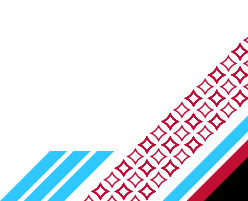Academic Program and Co-Curricular Assessment
Academic program assessment prioritizes continuous program improvement to maximize student learning. Academic program assessment is required by the Higher Learning Commission (HLC) and the Universities of Wisconsin System Administration. All academic programs are monitored annually for enrollment, retention and graduation rates using UW System data.
Additionally, programs submit full assessment reports and updated assessment plans every three years, under the Program Improvement Process (PIP). The Faculty Senate Assessment Committee, comprised of faculty members, reviews the plans and reports and provides detailed feedback to programs. This includes the General Education and University Requirements (GEUR) program, although it is not a degree-granting program.
Programs integrate the Assessment Committee feedback into the Program Audit Review (PAR) that occurs every six years. This academic program assessment requires a self-study report and presentation to the Program Audit Review Committee. Together, program assessment is often referred to as PIP-PAR.
The Provost, the Associate Provost, the Faculty Senate Assessment Committee and the PAR Committee, in partnership with department chairs, program directors and the Office of Institutional Research, are jointly responsible for assessment initiatives at UW-River Falls.
Contact the Associate Vice Chancellor for Academic Affairs with questions.
Program learning outcomes (PLOs) are focused action statements using clear, measurable and attainable language that reflects the core knowledge, skills and attitudes students should acquire within a specific program. Per the Higher Learning Commission (HLC), PLOs should reflect a level of rigor commensurate with program level (e.g., bachelor’s level, master’s level, etc.), and must be consistent across different modes of delivery and locations.
Every program is required to have PLOs as a basis for academic program assessment, and they should be reviewed and updated periodically for relevancy, clarity, and focus. Program learning outcomes for all UW-River Falls programs may be found on the PLO webpage and should also be displayed on program websites or in program handbooks.
Common Learning Outcomes are outcomes shared by different programs, such as in General Education and University Requirements (GEUR).
On Wednesday, Oct. 21, 2020, the Faculty Senate approved a motion to move from program prioritization to program improvement and this was subsequently approved by the Chancellor
PIP Goals
- The process is intended to provide useful information to the campus at large, and to departments and programs to help with ongoing responsibilities such as assessment and program improvement. It is critical to stress that the process is informative for decision makers, rather than deterministic.
- The second goal is to combine the program improvement, assessment, and program audit and review processes. Hence, the label PIP-PAR (program improvement process and program audit and review).
- A third goal of PIP-PAR is to integrate program assessment into a single, combined process, creating synergies and efficiencies between program improvement, program audit and review, and assessment.
Overview: All authorized academic programs (i.e., associates degrees, majors, certificates, GEUR, and graduate programs) must complete an approved program audit and review (PAR) process every six years. This process conforms to UWS Office of Academic Affairs SYS 102 Policies in section G: Monitoring Academic Degree Programs and HLC requirements for managing program array. Programs should complete the PAR Self-Study using the template provided on the Assessment Resources page. The PAR Committee will review and schedule a program presentation. Using the information from the self-study and presentation, the PAR Committee will make program recommendations to the Provost.
Programs with disciplinary-specific accreditation (i.e., for the major) may request to be allowed to use their most recent accreditation report if it includes either the same or essentially the same factors used in PAR. Such requests must be supported by the Dean and approved by the Provost’s Office and will be considered if the timeframe is appropriate (i.e., a disciplinary-accreditation review in 2012 should not substitute for a UWRF Program Review in 2025).
Newly authorized programs submit assessment plans and reports and complete a PAR review within 6 years of implementation, using the same processes as other programs, and as specified in UW System Administrative Policy 102 and 102A.
View PAR Committee members.
Additionally, the PAR Committee will annually review every academic program’s enrollment, retention, and graduation rates using UW System data in a Metric Table Rubric (link coming soon!) The PAR committee will populate the data tables, review the data tables and generate a summary narrative report to be sent to the program director and department chair for review and response.
Programs are encouraged to review their data with the dean. The PAR Committee may request a meeting with programs or departments to further qualify their program response. This may be scheduled through the Associate Provost’s office.
Once the full program response has been received, the PAR Committee will review the complete report and make a recommendation to the Chancellor, using the PAR Committee Financial and Enrollment Evaluation categories of:
- Financial Evaluation- No/Minor Concerns, Concerns, or Significant Concerns
- Enrollment Evaluation- No/Minor Concerns, Concerns, or Significant Concerns
All programs will be reviewed using this report annually beginning 2025-2026. Programs scheduled for the PAR review may use this report as part of the self-study process.
For programs scheduled for the PIP and/or the PIP-PAR process, the general timeline is as follows:
- October of the prior year: Notice is sent to programs under PIP or PIP-PAR review for the following year.
- July 1: If external reviewers will be used (optional), the program will notify the AVC Office.
- September 1: A reminder notice is sent to programs under PIP or PIP-PAR review during the year.
- September 15: Programs completing the full PIP-PAR process submit updated assessment plans and reports.
- February 1: Programs completing only the PIP process submit assessment plans and reports. Programs completing the full PIP-PAR review submit their self-study report.
- February 15-May 1: Program Audit and Review Committee conducts program review presentations.
- July 1: PAR Committee makes final recommendations to the Provost.
View our assessment resources.

